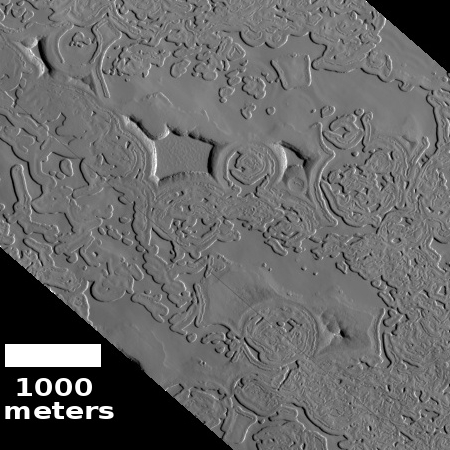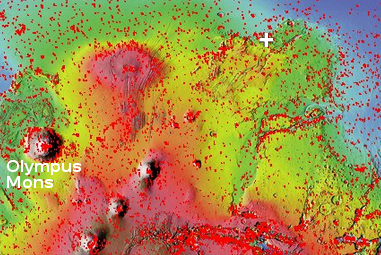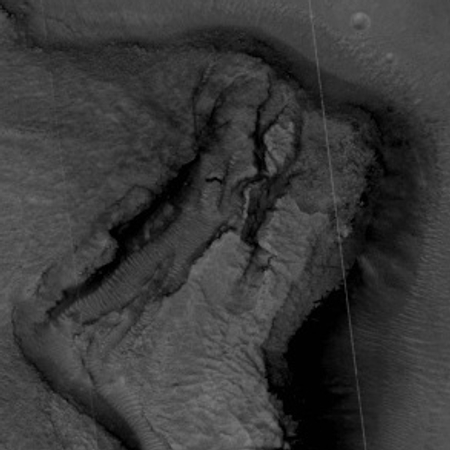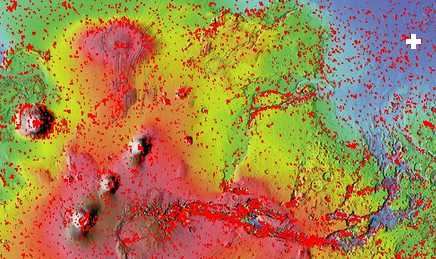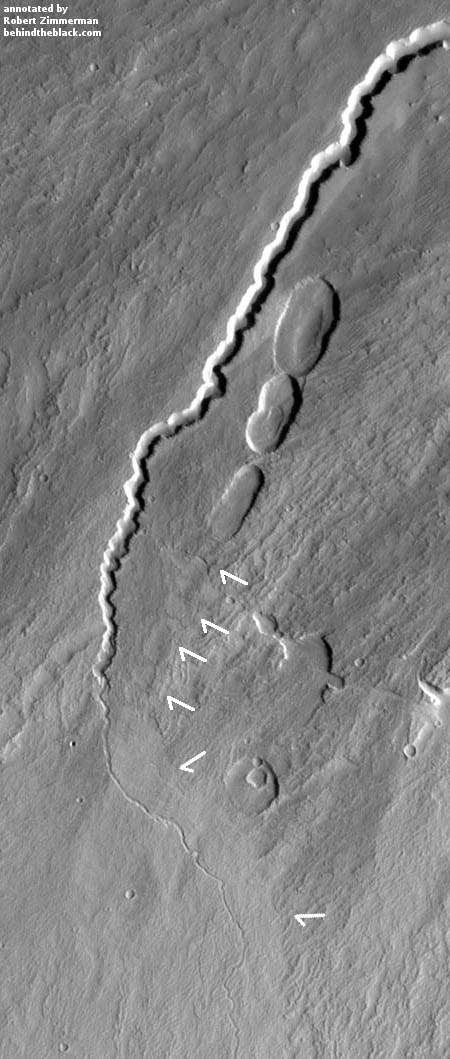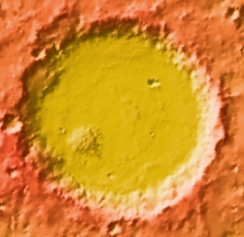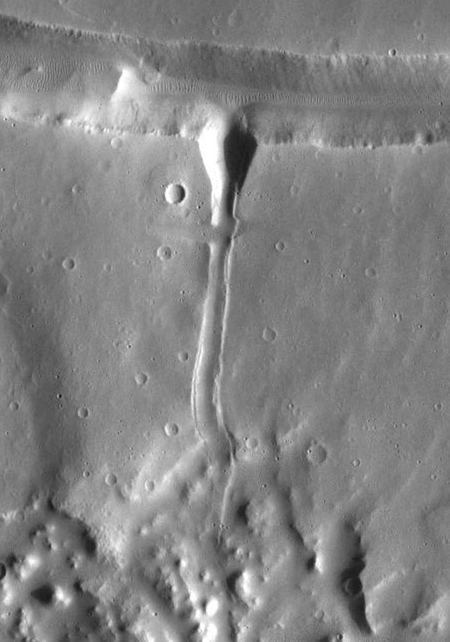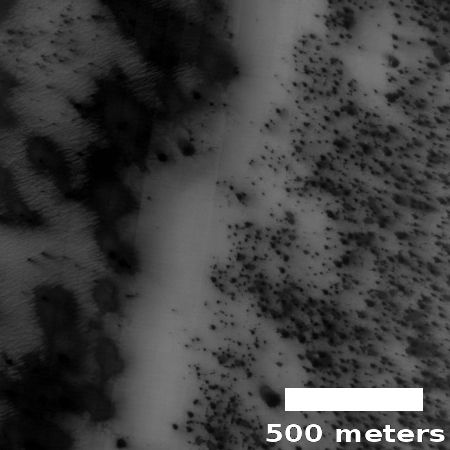Intriguing water-ice cloud on Mars
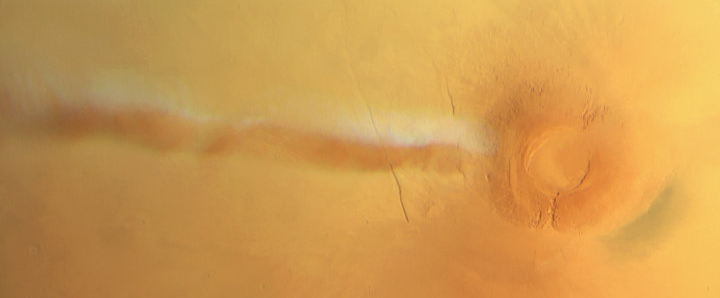
An extended water-ice cloud has formed recently on the downwind side of the large Martian volcano Arsia Mons. The image above, cropped to post here, was taken by Europe’s Mars Express orbiter, and shows the cloud extending westward from the volcano.
In spite of its location, this atmospheric feature is not linked to volcanic activity but is rather a water ice cloud driven by the influence of the volcano’s leeward slope on the air flow – something that scientists call an orographic or lee cloud – and a regular phenomenon in this region.
The cloud can be seen in this view taken on 10 October by the Visual Monitoring Camera (VMC) on Mars Express – which has imaged it hundreds of times over the past few weeks – as the white, elongated feature extending 1500 km westward of Arsia Mons. As a comparison, the cone-shaped volcano has a diameter of about 250 km.
… Mars just experienced its northern hemisphere winter solstice on 16 October. In the months leading up to the solstice, most cloud activity disappears over big volcanoes like Arsia Mons; its summit is covered with clouds throughout the rest of the martian year.
However, a seasonally recurrent water ice cloud, like the one shown in this image, is known to form along the southwest flank of this volcano – it was previously observed by Mars Express and other missions in 2009, 2012 and 2015.
What the article does not mention about these seasonal water ice clouds is that they are thought to be related to the evidence of past glaciers on the volcano’s western slopes. Some scientists believe that significant underground ice, left over from those glaciers, is what causes the clouds.

An extended water-ice cloud has formed recently on the downwind side of the large Martian volcano Arsia Mons. The image above, cropped to post here, was taken by Europe’s Mars Express orbiter, and shows the cloud extending westward from the volcano.
In spite of its location, this atmospheric feature is not linked to volcanic activity but is rather a water ice cloud driven by the influence of the volcano’s leeward slope on the air flow – something that scientists call an orographic or lee cloud – and a regular phenomenon in this region.
The cloud can be seen in this view taken on 10 October by the Visual Monitoring Camera (VMC) on Mars Express – which has imaged it hundreds of times over the past few weeks – as the white, elongated feature extending 1500 km westward of Arsia Mons. As a comparison, the cone-shaped volcano has a diameter of about 250 km.
… Mars just experienced its northern hemisphere winter solstice on 16 October. In the months leading up to the solstice, most cloud activity disappears over big volcanoes like Arsia Mons; its summit is covered with clouds throughout the rest of the martian year.
However, a seasonally recurrent water ice cloud, like the one shown in this image, is known to form along the southwest flank of this volcano – it was previously observed by Mars Express and other missions in 2009, 2012 and 2015.
What the article does not mention about these seasonal water ice clouds is that they are thought to be related to the evidence of past glaciers on the volcano’s western slopes. Some scientists believe that significant underground ice, left over from those glaciers, is what causes the clouds.


